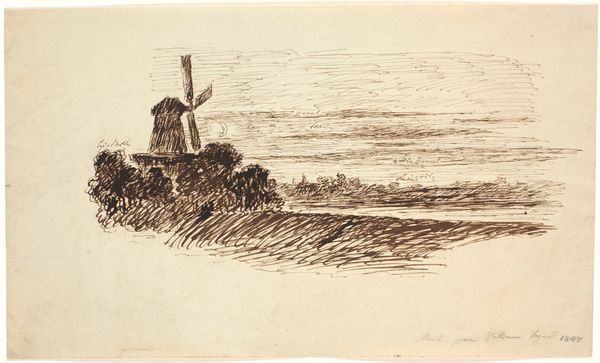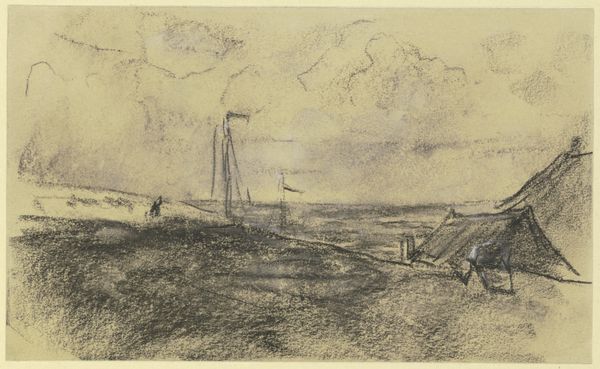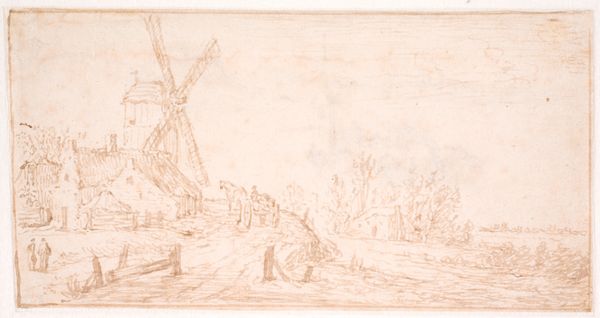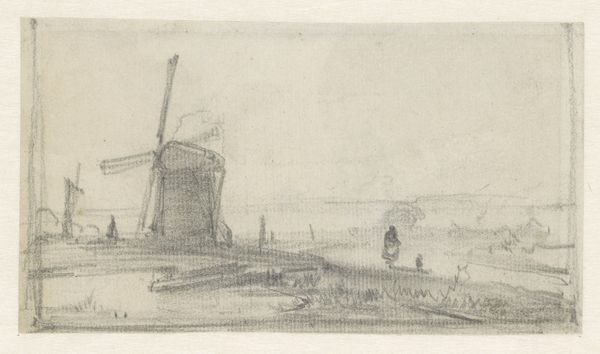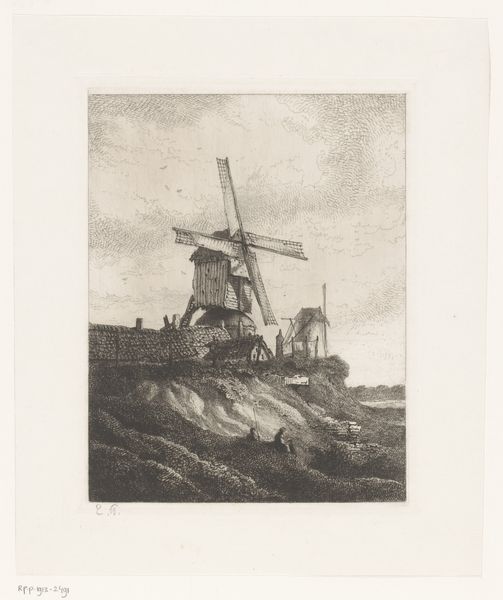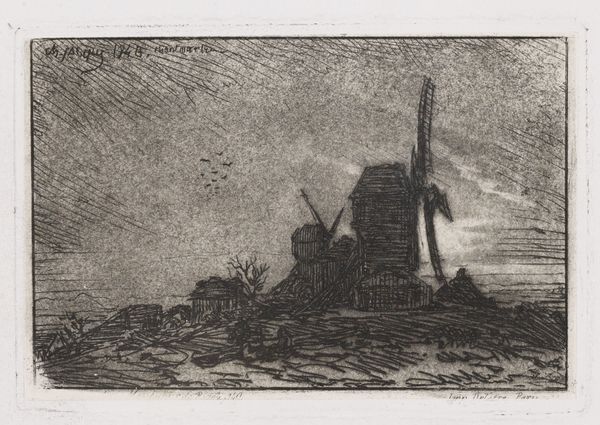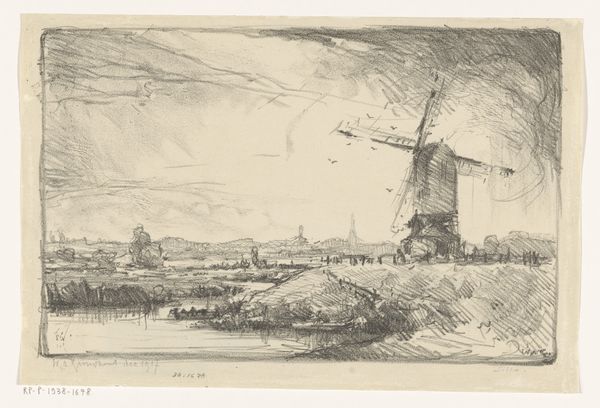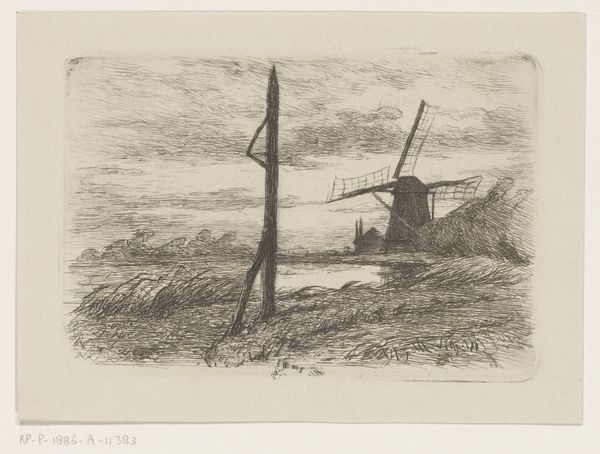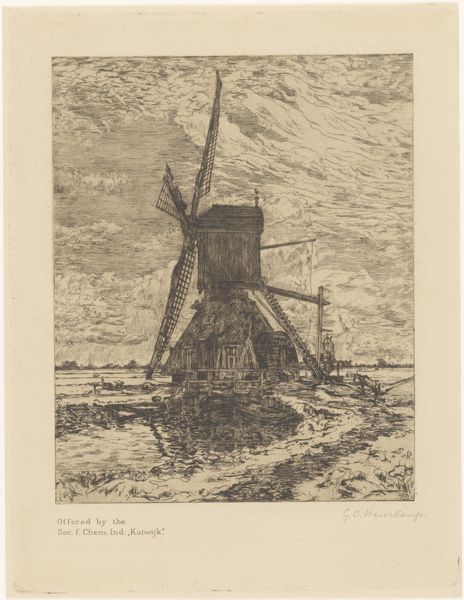
drawing, print, etching
#
drawing
# print
#
etching
#
old engraving style
#
landscape
#
etching
#
realism
Dimensions: height 267 mm, width 338 mm
Copyright: Rijks Museum: Open Domain
Editor: This etching, "Nes (Ameland) II," by Otto Hanrath from 1925, presents a weathered landscape dominated by a windmill and a solitary figure. I find the contrast between the man and the windmill to be powerful, both standing as silent witnesses to time. What symbols or meanings do you draw from this landscape? Curator: Indeed. The windmill itself is rich in symbolism. Beyond its literal function, the windmill has, for centuries, served as an emblem of Dutch identity. Note its position relative to the man. Do you notice anything? Editor: He's in the foreground, smaller in size, more transient-looking than the imposing structure. Is the contrast intentional, suggesting something about the relationship between man and nature, perhaps? Curator: Perhaps! It could speak to the enduring nature of industry versus the individual, or it may hint at a deeper, more personal narrative. The solitary figure resonates, echoing archetypes of wanderers or even hermits. Consider, too, the marks on the work. Does it evoke other images for you? Editor: There is something reminiscent of folk art. I imagine it also has ties to local folklore or even mythology specific to the Ameland area, doesn't it? Curator: It likely does, and tracing those connections could further unlock layers of meaning. This etching is an example of how a seemingly simple landscape is loaded with cultural memory. It invites us to think about the stories we project onto images, linking past and present. Editor: This has certainly shifted how I perceive landscapes. Thanks for offering those perspectives! Curator: My pleasure. It is vital to remember that symbols and interpretations evolve. "Nes (Ameland) II" stands as an open text, continuing to generate conversation and, hopefully, new meaning for everyone.
Comments
No comments
Be the first to comment and join the conversation on the ultimate creative platform.


